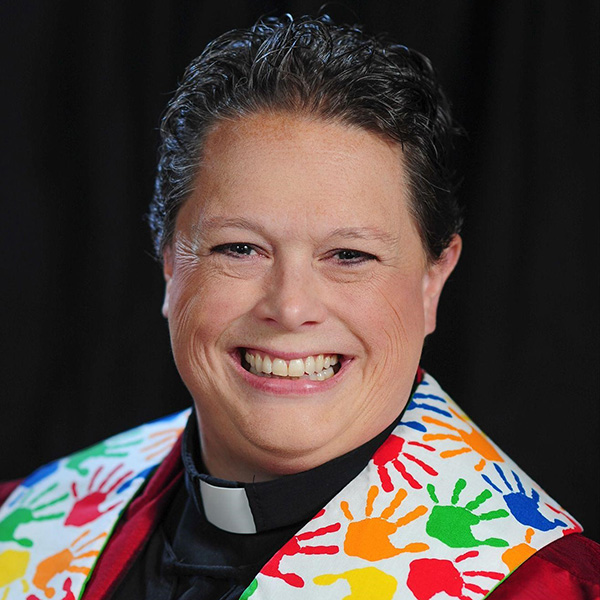Seventeen children huddled on bended knees outside a kindergarten classroom in Raleigh, N.C., and waited for the music to begin.
On cue, they unfurled their bodies and zigzagged across the lawn, like frantic, swimming tadpoles in a pond.
“You have back legs,” the teacher called, rhythmically. “You have front legs.”
The students excitedly extended their limbs, then started jumping when the teacher said that they had grown into frogs.
As the exercise ended, teacher Natalia Disney asked the students to explain the frog’s life cycle.
Nearly every hand shot up.
Disney was clearly impressed -- but not surprised. “We just did this this morning, and they already know it,” she said.
Welcome to Douglas Creative Arts & Science Magnet Elementary School, one of 120 schools across North Carolina, Oklahoma and Arkansas to embrace the “A+ Schools” philosophy of incorporating dance, drama, art and music into everyday learning.
A+ Schools recognize what a growing number of educators already know -- that children learn best by doing, not being shown.
The result is a student body that is more engaged and readily grasps -- and retains -- material, and faculty and staff that are working together as never before.
“In many traditional schools, teachers kind of go into their classroom and do their own thing,” said Michelle Burrows, a former fourth-grade teacher and the director of A+ Schools North Carolina.
They rarely, if ever, sit down with arts specialists to brainstorm the best way to teach a lesson or how to coordinate and support each other’s efforts.
The A+ approach is different.
“One of the advantages of being at an A+ School is the shared responsibility for educating all of the kids,” explained Burrows. “Teachers don’t feel like an island unto themselves anymore.”
Team building is the foundation
If total arts integration is the goal of the A+ approach, team building is the foundation. A+ Schools don’t just talk about collaboration. They make it happen.
Teachers are no longer expected to rely solely on workbooks, chalkboards and lectures to make their points. Every A+ School builds time into the schedule for teachers and specialists to brainstorm ways to bring the curriculum to life. The teachers are given the creative freedom -- and encouragement -- to let loose their imaginations and to let their expertise shine.
At the same time, through the networks that develop among A+ Schools, teachers find expanded opportunities to learn from one another. Disney, for example, created her frog-life-cycle dance after attending an A+ workshop where she saw a similar dance about butterflies.
Faculty buy-in and institutional flexibility are essential to becoming an A+ School. In fact, no school can become a part of the A+ Schools Program without broad teacher support. The program requires that 85 percent of a school’s faculty agree to become an A+ School before it will be accepted into the program.
Before the faculty at an interested school make that decision, Burrows said, A+ staff spend about a year introducing them to the collaborative approach, answering teacher questions and providing team-building experiences.
Once a school signs on, it commits to a three-year implementation process that includes a five-day summer institute the first year and three-day summer institutes in the second and third years. Faculty and staff also attend other retreats and receive support from A+ fellows throughout the year.
Beyond that, there is no A+ handbook setting out specific policies and requirements. Schools decide on their own how they want to sculpt and evaluate their programs.
While each school has flexibility in how it implements the approach, all A+ Schools adhere to a set of eight core “essentials” in areas such as arts, curriculum, broad-based leadership and collaboration, experiential learning, enriched assessment, and recognition of multiple “intelligences,” or multiple means of learning.
A vision of arts in learning
The A+ Schools Program was founded upon the vision of the late Ralph Burgard, a well-known arts enthusiast who spent his life trying to integrate the arts into the broader community.
Burgard, who died in 2008, brought his arts crusade to North Carolina in 1955, when he served as director of the Arts Council of Winston-Salem, N.C., the nation’s first local arts council. He eventually became the first director of the Arts Councils of America.
In 1995, the Kenan Institute for the Arts in Winston-Salem used Burgard’s vision of the arts playing a central role in learning to launch 25 A+ Schools across the state, from pre-kindergarten through 12th grade.
Then as now, the schools were in a variety of settings, from rural mountain enclaves to coastal communities and cities in between.
Soon, other schools joined the network. Today, North Carolina has 40 A+ Schools, with plans to add another five to eight schools in the next year.
Startup costs and funding for A+ Schools vary by state. In North Carolina, the program costs $60,000 per school for three years of training. Most schools’ A+ participation is funded by a combination of public and private resources, including state and federal grants, private donations and local funding from school districts.
In 2002, the North Carolina program helped launch A+ Schools in Oklahoma. That network has grown to nearly 70 schools.
The Arkansas network came on board in 2003 and currently has 10 schools.
Louisiana is set to launch its first seven schools this summer with the help of the Oklahoma network.
“[We] knew immediately that this was the program that would work for Louisiana,” said Bethany France, director of A+ Schools in Louisiana. “Each school adapts the program to fit its needs. There is no one-size-fits-all approach included in the A+ model.”
The four states make up the National A+ Schools Consortium, which works to provide an extensive network of more than 100 A+ teaching and training fellows, assessment tools and opportunities for collaboration, in which the schools or states can share resources and experiences.
In 2010, the North Carolina program moved its headquarters to Raleigh to become a part of the North Carolina Arts Council. It continues to serve as the lead organization in the A+ network.
Douglas, an A+ School
At Raleigh’s Douglas Elementary, which became an A+ School in 2000, teachers and specialists receive two days of interactive professional development at the start of each school year. Arts specialists meet several times a year with colleagues at other A+ Schools to brainstorm and share successes.
And unlike traditional schools, where teachers rarely meet with others outside their grade level, Douglas sets aside dedicated planning periods every few weeks for teachers and specialists to get together.
It’s during these meetings that a second-grade teacher and a dance instructor might team up to have students act out the swirl of a tornado or the vibrations of a sandstorm from science class. Or a fifth-grade teacher might pair up with a music specialist to have students who are studying jazz in one class write a research paper on a jazz musician in the other.
But it’s not just complex subjects like tornadoes and jazz appreciation that the arts can help bring alive. Sometimes, even simple punctuation can get a boost from the arts.
Recently, for example, a Douglas first-grade teacher approached drama specialist Raquel “Rockin’” Rouse for help teaching her first-graders about exclamation points. They weren’t getting it.
Rouse, who came to Douglas about six years ago, had the children write exclamatory sentences in drama class, read them aloud and then jump when they reached each sentence’s end. They became, in effect, living exclamation points.
It clicked!
“This is the first time that I feel a part of the whole school environment,” said Rouse. “The teachers here feel like we can fly.”
Focus on collaboration
With its focus on collaboration, the A+ approach inevitably fosters a system of supportive and shared leadership, Douglas principal Dr. Susan Spivey said.
“When teachers are collaborating, they’re teaching to their strengths,” Spivey said. “Leaders evolve from each of those teams, and more leadership opportunities are created.”
As a result, time for collaboration is jealously protected and built into the school’s master schedule, Spivey said.
But A+ Schools foster collaboration not only within the individual schools but also throughout the A+ network.
This year, for example, Douglas used a collaborative arts grant to partner with two other A+ Schools to bring in an artist-in-residence who worked one full week with students at each school.
“We took what they learned from that week, and the artist came to Douglas and we made some tweaks,” said Alice Spickard, Douglas’ A+ coordinator.
As a bonus, Burrows said, the A+ approach naturally complements and supports the higher-order thinking and problem solving required of the new Common Core curriculum, the latest national effort to standardize teaching objectives.
The standards “provide the ‘what’ the teachers have to teach,” explained Burrows. “A+ provides the ‘how’ these standards should be taught.”
In A+ Schools, the entire community plays a key role in making success happen, Burrows said.
“We work to validate that every staff member has unique talents, skills and experiences that are valuable for everyone in the building,” she said. “We break teachers out of the norm and encourage cross-grade and cross-discipline partnerships.”
And that can be an adjustment for teachers used to working alone.
“We’re asking them to really rethink what parts are working and what parts need some revamping,” Burrows said.
Reforming a culture
Ultimately, A+ Schools are about reforming the entire culture of a school, Burrows said. It’s a process that takes time, as teachers and principals learn practices of collaboration and shared leadership.
“It happens slowly, with teachers that are strongly committed stepping out first and modeling leadership,” she said. “Slowly, the culture begins to shift, and before you know it, the school has developed their own community where they all share in moving their school and students forward in a way that makes sense to them.”
The approach appears to be paying off.
An independent, eight-year study of North Carolina’s A+ Schools found increases in student engagement and attendance, fewer disciplinary problems, and increased parental and community involvement.
North Carolina’s A+ Schools also have a history of strong student achievement, with students meeting or exceeding their growth goals year after year, Burrows said.
Similar results in Oklahoma have shown that A+ students, on average, “consistently outperform their counterparts within their district and state on the Academic Performance Index.”
Nicholas Harvey II, the principal at Rochelle Middle School, an A+ School in Kinston, N.C., said his school’s results have been dramatic.
Rochelle Middle is in an economically depressed area that includes nine housing projects. The school was plagued by low test scores and high staff turnover. Harvey was the school’s seventh principal in 10 years.
In 2009, the year before Rochelle became an A+ School, Harvey’s office received nearly 2,000 discipline referrals. After just one year in the A+ network, referrals dropped to fewer than 200.
The staff is energized. And thanks to outreach initiatives like Parent Night, parents are more engaged, too.
Test scores at the school are also improving, with reading and math scores up from an overall proficiency of 29 percent in 2007 to 53 percent today.
“It’s been a great transition for us,” said Harvey, noting that Rochelle has been recognized by the county as a model school for behavior improvement.
Obvious impact
Back at Douglas in Raleigh, the impact of the A+ approach to collaboration is obvious throughout the school.
Children cluster eagerly in classrooms to work on skits and to design shadow puppet performances.
Teachers and specialists gather regularly during planning periods to map out joint lessons.
A community garden tended by parents and students flourishes in a side atrium.
Visiting artists and musicians can often be seen wandering the corridors.
Parents drop in during the day for regularly scheduled “informances” -- informal performances where students show parents and faculty what they’ve learned.
And the halls are filled with art projects that serve as both creative outlets and tangible reminders that learning can be fun.
“That is what makes us different,” said Ann Ramsay, an instructional resource teacher at Douglas.
“Here, if students learn through music, if they learn through movement, if they learn visually or spatially, if we have everybody working together with the curriculum, then the opportunity for that child to learn is greatly increased.”
And that, Douglas teachers say, is what collaboration is all about.
Questions to consider
Questions to consider
- To what extent are people in your organization “islands unto themselves”? What specific benefits could come from increased collaboration?
- How essential to your organization’s success is employee buy-in and support? Do you have it? How do you know?
- Who inside or outside your organization could bring a fresh perspective to your work? Where are the untapped opportunities for collaboration?
- How would your organization have to change for employees to be more willing to step out and model leadership?
- How do you build in time each week for your team to brainstorm together and imagine more creative ways of working?
























